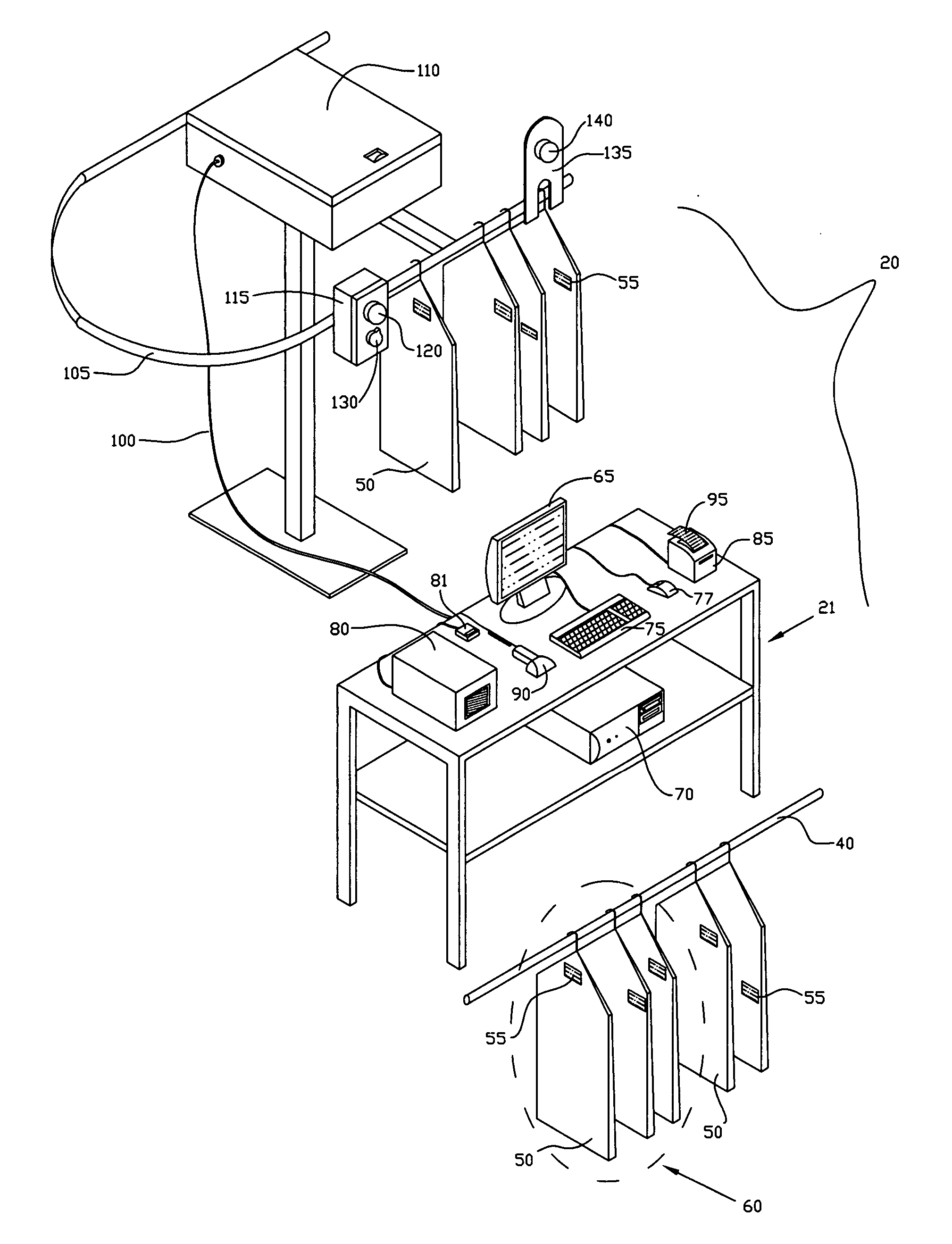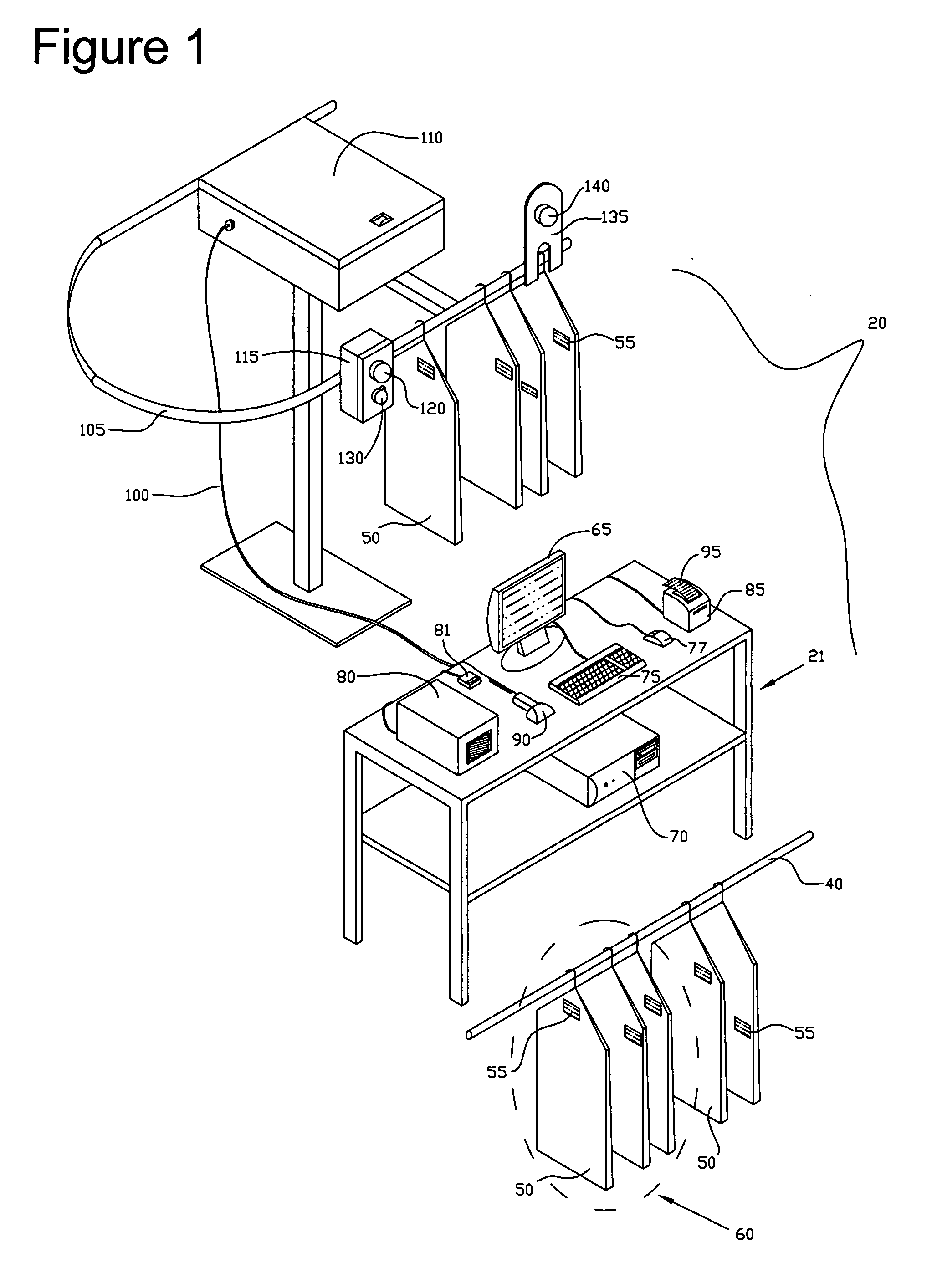Automated dry cleaning assembly conveyor system
a conveyor system and dry cleaning technology, applied in the direction of magnetic separation, chemistry apparatus and processes, instruments, etc., can solve the problems of increasing the cost of inventory control, aggravate the need to cut costs, and the old sorting routine can be extremely cumbersome and time-consuming,
- Summary
- Abstract
- Description
- Claims
- Application Information
AI Technical Summary
Benefits of technology
Problems solved by technology
Method used
Image
Examples
Embodiment Construction
[0054] The invention comprises an automated dry-cleaning system 20 seen pictorially in FIG. 1 and in block form in FIG. 2. The system is adapted to handle and inventory items being dry-cleaned. As used herein, the term “item” designates not only garments, but other products such as, rugs, bedding items, pillow casings, blankets, and a variety of other things which can be dry-cleaned. An operator (not shown) usually stands near the work table 21 (FIG. 4) in the reception area 23 of a retail garment dry-cleaning establishment. In the “mark-in process,” one or more items, usually comprising garments 50, from a given customer during a given transaction are received. Group 60 (also called “customer orders)” of items belonging to a given customer transaction are identified. (If the same customer later brings more clothes or items for cleaning, a separate transaction is observed, and a separate customer order or group is formed.)
[0055] After a group is determined, its members become commi...
PUM
 Login to View More
Login to View More Abstract
Description
Claims
Application Information
 Login to View More
Login to View More - R&D
- Intellectual Property
- Life Sciences
- Materials
- Tech Scout
- Unparalleled Data Quality
- Higher Quality Content
- 60% Fewer Hallucinations
Browse by: Latest US Patents, China's latest patents, Technical Efficacy Thesaurus, Application Domain, Technology Topic, Popular Technical Reports.
© 2025 PatSnap. All rights reserved.Legal|Privacy policy|Modern Slavery Act Transparency Statement|Sitemap|About US| Contact US: help@patsnap.com



